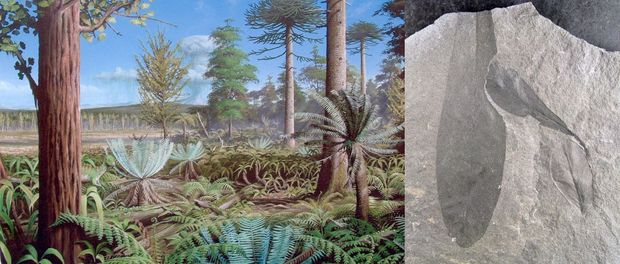by Veronika Meduna

Palaeoclimate scientist and new director of the British Antarctic Survey Jane Francis, in her element in Antarctica.
Although Antarctica is now covered in ice, some of the most common fossils in the rock record are those of plants. These ancient botanical remnants are signposts to a much warmer past that supported lush tropical forests, flourishing in a humid climate.
Jane Francis is a palaeoclimatologist, most recently at the University of Leeds, who this week begins her new role as the director of the British Antarctic Survey. She was in New Zealand recently to present the 2013 S. L. Lecture in Antarctic Studies in which she discussed her research on Antarctica plant fossils, and how they trace ancient climates and the continent's journey to the South Pole.
The oldest Antarctic plant fossils reach back almost 400 million years, but perhaps the most astonishing discoveries are those of fossil plants from the mid-Cretaceous, about 100 million years ago when dinosaurs roamed the planet and Antarctica was already in a polar position but still much warmer than today. Sub-tropical forests and shrubs thrived, despite the extreme polar light regime of continuous summer sunlight and long dark winters.
Many of the fossil plants found in Antarctica are ancestors of vegetation that grows in South America and Australasia today. As the polar climate cooled and ice sheets developed about 35 million years ago, small dwarf shrubs of southern beech (Nothofagus) survived close to the pole for millions of years, until the expanding ice sheets wiped all forests from Antarctica.
Apart from her scientific research, Jane Francis has also collaborated with several artists who have painted reconstructions of Antarctic landscapes based on the information gleaned from the plant fossil record.For example, the image below, on the left, shows a reconstruction of the Alexander Island forests as they may have looked like during the mid-Cretaceous, about 100 million years ago. Painter Robert Nicholls has placed every tree and shrub in the position where the respective fossils have been found.

On the left, the reconstruction of the Alexander Island forests is based on the research of Jane Francis and her colleagues at the University of Leeds and the British Antarctic Survey, where the painting is displayed. On the right, a rock shows the impressions of glossopteris, an ancient seed fern which has also been found in South America, Africa and India. It was first discovered by Edward Wilson, doctor, artists and scientist on Captain Scott's ill-fated Terra Nova expedition, who was the first to study coal shales and to recognise them as geological relics from a warmer period.

